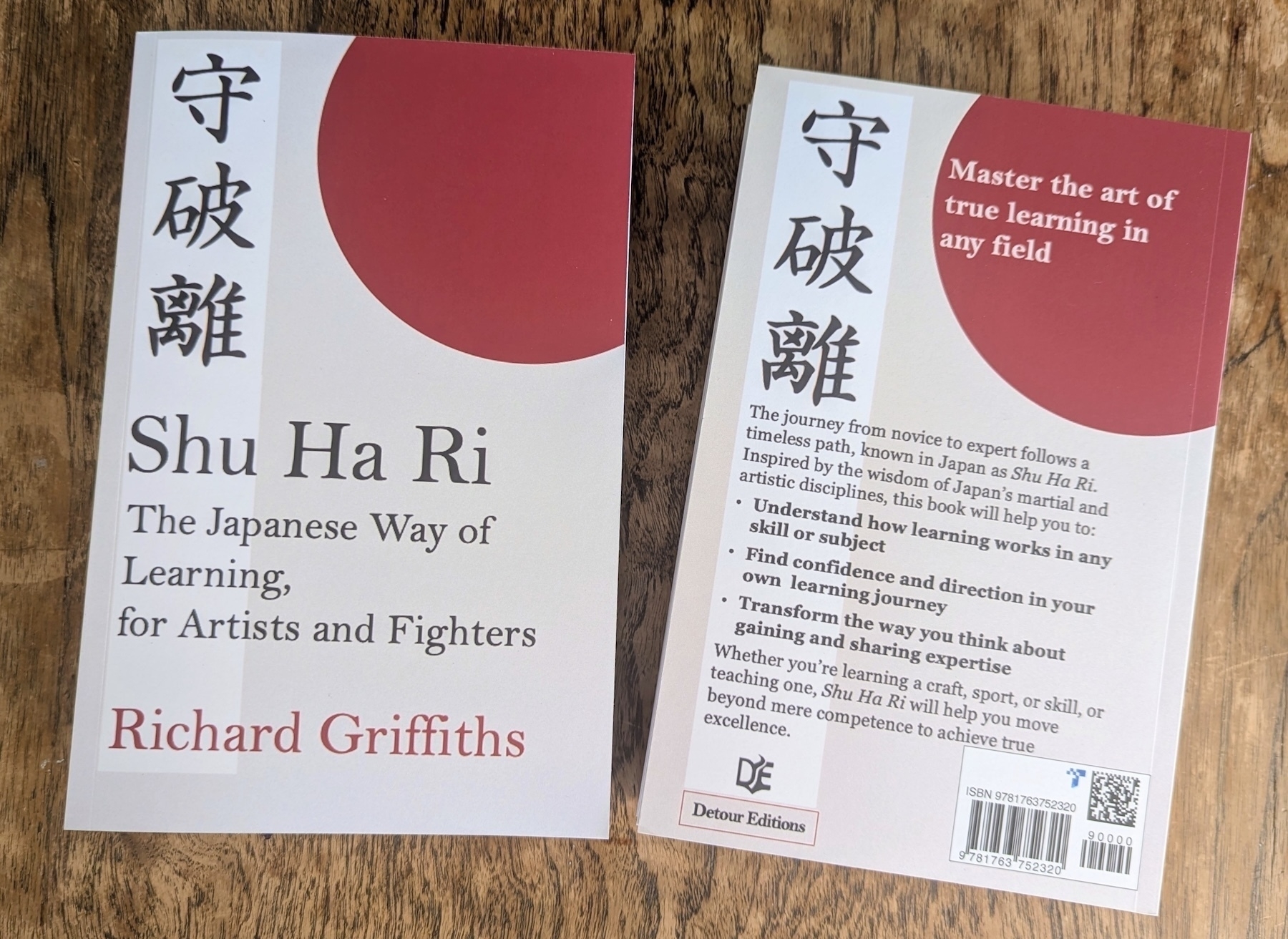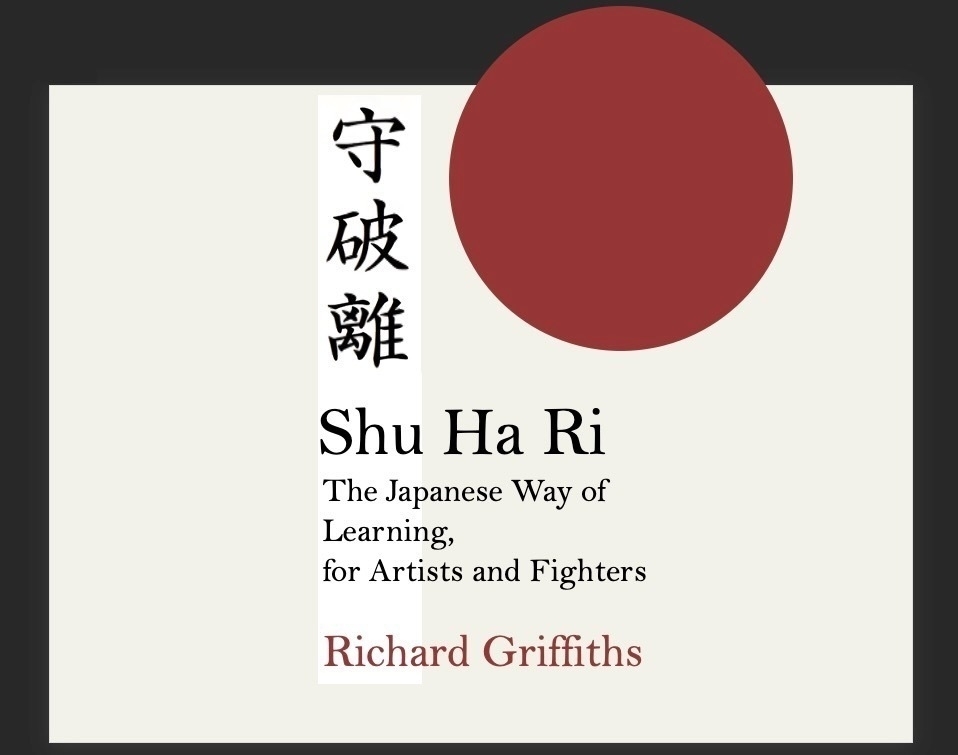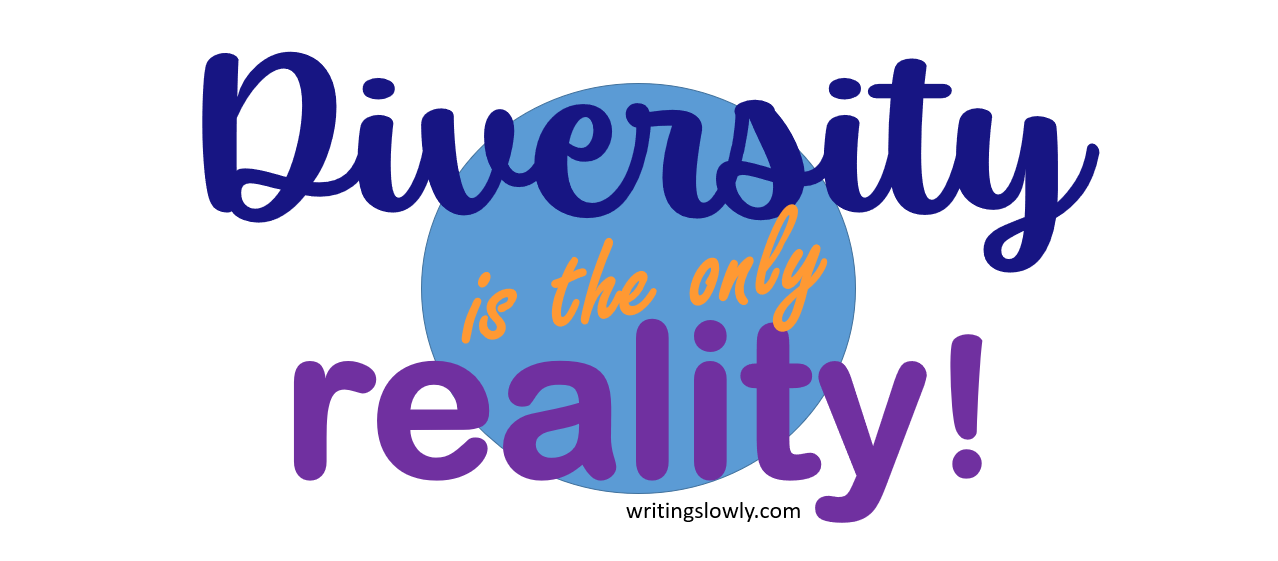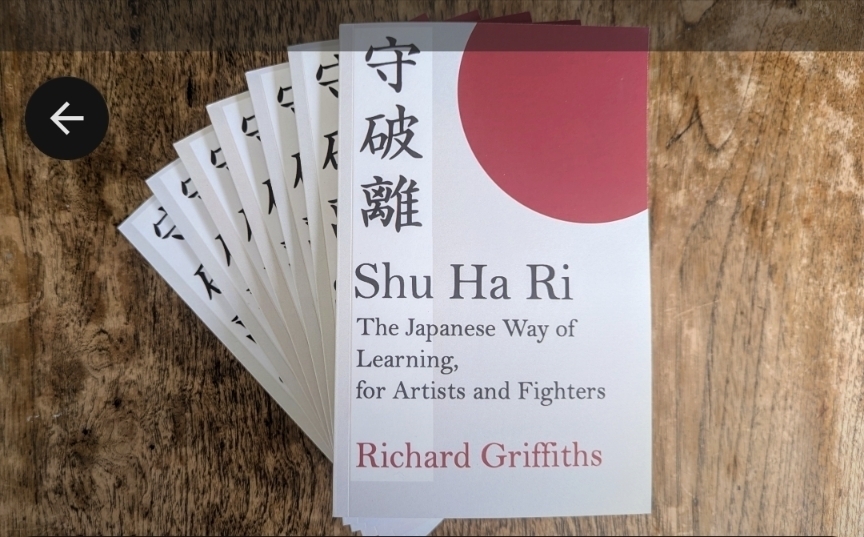The Unity of Pen and Sword: Understanding Bunbu Ichi
My recent book is subtitled “The Japanese Way of Learning, for Artists and Fighters”. But why artists and fighters, and why mention them together?
In medieval Japan, warriors weren’t really expected to choose between intellectual pursuits and martial prowess. Instead they were required to master both. This philosophy is captured in the concept of bunbu ichi (文武一), which literally means “the civil and the martial are one.”
The principle emerged from bunbu nidō (文武二道), the “two paths of writing and warring.” This phrase emphasized that true excellence required competence in both literary arts and combat. Like much in Japanese culture it originated in China, but the Japanese made it thoroughly their own. By the early Muromachi period (1336-1573), it had evolved into a foundational concept in Japanese political thought, as scholar Pier Carlo Tommasi notes in his 2018 research.
The warrior-ruler who embodied both scholarly learning and military skill became the cultural ideal. According to historian G. Cameron Hurst, by the mid-fourteenth century, bunbu ryōdō (文武両道) thinking was firmly established in Japan, with this dual-talented warrior as the model leader.
Scholars like Oleg Benesch and Thomas Conlan have explored how this paradigm shaped Japanese identity and warrior culture. Their research reveals that the civil-martial unity wasn’t static but evolved alongside Japan’s political landscape, particularly during the medieval period when warrior classes consolidated power.
This wasn’t particularly about producing well-rounded individuals though. The integration of literary and martial disciplines was part of a sophisticated understanding of governance and power. Warriors who could compose poetry, practice calligraphy, and engage with classical texts were seen as more legitimate rulers than those who relied solely on force.
“from the time of the sages of the past, they have followed the path of bun to the left and bu to the right, for bun without bu is such that authority withers, while bu without bun means that the people are in fear, and remain distant. Instead, bun and bu belong together so as to allow for virtue to spread.” - Fujiwara Shigenori, 1254 (quoted in Conlan, 2011:88).
Besides, as the Warring States period (1467-1603) ended and Japan unified under the Tokugawa shogunate (1603-1868), the role of the warrior classes transformed dramatically, from fighting large-scale military campaigns to serving primarily as administrators of the unified state. This shift made the bunbu ideal a practical necessity. To fulfill their new roles in peacetime society, warriors now needed literacy, administrative skills, and cultural refinement as much as they needed martial prowess.
I wrote my book Shu Ha Ri: The Japanese Way of Learning, for Artists and Fighters with this concept in mind. The juxtaposition of fighters and artists may sound strange to Western readers, but it’s fairly well understood in Japan, and it’s a duality echoed in Ruth Benedict’s classic anthropological study The Chrysanthemum and the Sword.
The legacy of bunbu ichi continues to influence Japanese culture today. It serves as a reminder that strength without wisdom is incomplete, just as scholarship without the courage to act remains unfulfilled. True mastery, according to this ancient wisdom, requires a delicate balance.
My book, Shu Ha Ri: The Japanese Way of Learning, for Artists and Fighters, is available now. Please check it out.
References
Benesch, Oleg. Inventing the Way of the Samurai: Nationalism, Internationalism, and Bushido in Modern Japan. Oxford: Oxford University Press, 2014.
Benesch, Oleg. “National Consciousness and the Evolution of the Civil/Military Binary in East Asia.” Taiwan Journal of East Asian Studies 8, no. 1 (2011): 129–71.
Benedict, Ruth. The Chrysanthemum and the Sword: Patterns of Japanese Culture. Boston: Houghton Mifflin, 1946.
Conlan, Thomas. “The Two Paths of Writing and Warring in Medieval Japan.” Taiwan Journal of East Asian Studies 8, no. 1 (2011): 85–127.
Hurst, G. Cameron. “The Warrior as Ideal for a New Age.” In The Origins of Japan’s Medieval World, edited by Jeffrey Mass, 209–233. Stanford: Stanford University Press, 1997.
Tommasi, Pier Carlo. “The Bunbu Paradigm Reconsidered: Warrior Literacy and Symbolic Violence in Late Medieval Japan.” Proceedings of the Association for Japanese Literary Studies 19 (January 2020). doi.org/10.26812/…
I've written a book and here are the details!
Shu Ha Ri: The Japanese Way of Learning, for Artists and Fighters

Master the art of true learning in any field
The journey from novice to expert follows a timeless path, known in Japan as Shu Ha Ri. Inspired by the wisdom of Japan’s martial and artistic disciplines, this book will help you to:
- Understand how learning works in any skill or subject
- Find confidence and direction in your own learning journey
- Transform the way you think about gaining and sharing expertise
In an era dominated by digital learning and AI, we’ve lost sight of a fundamental truth: true learning is a deeply human and social act. Technology offers resources, but it can never replace the nuanced transmission of knowledge between a committed teacher and a keen student.
Shu Ha Ri: The Japanese Way of Learning highlights the dynamic partnership between student and teacher. It demonstrates that true expertise is a continuous cycle of learning, adapting, and passing on wisdom. To learn is to connect with past generations and bravely guide the next.
Whether you’re learning a craft, sport, or skill, or teaching one, Shu Ha Ri: The Japanese Way of Learning will help you move beyond mere competence to achieve true excellence. If you’re ready for a more effective, human-centered path to mastering any skill, “Shu Ha Ri” is your essential guide.

守 破 離
Shu Ha Ri, the powerful concept from the traditional Japanese arts, provides an enduring framework for understanding the distinctly human journey of learning. Although it originated in Japan, it’s a set of ideas that go beyond cultural boundaries. This deceptively simple phrase, of just three short syllables, is key to passing on knowledge from one generation to the next, yet without stifling innovation and change.
Shu Ha Ri can be translated, quite simply, as ‘hold-break-leave’, a phrase which captures the evolving stages of learning:
守
Shu (Hold): At first the students meticulously imitate their teacher, grasping the fundamentals through close observation and practice. The teacher provides essential guidance in a protective environment, ensuring that students build a solid foundation right from the start of their learning journey.
破
Ha (Break): The students begin to experiment and develop their own style. Meanwhile, the teacher encourages exploration and independent thinking, helping students move beyond their frustrations to refine their skills and discover their unique flair.
離
Ri (Leave): The students transcend the teacher’s teachings, ultimately to emerge as experts themselves. The focus shifts from copying to creating. Students are now capable of not only applying their knowledge but also contributing to the field themselves, potentially even becoming teachers to future generations.
But proficiency isn’t the end of this journey. The path of learning is far from linear. It’s a cycle. True experts return again and again to their ‘beginner’s mind,’ the root of their quest for excellence.
その道に入らんと思う心こそ我身ながらの師匠なりけれ
(Sono michi ni iran to omou kokoro koso waga mi nagara no shishō narikere)To have the mind to enter this path
is, indeed, to have an inherent teacher.
— Rikyū, Hundred Verses, 1
To read Shu Ha Ri. The Japanese Way of Learning for Artists and Fighters, simply order the book (ebook or paperback) on Amazon, wherever you live.
Here are a few links to get you started:
- United States
- Australia
- UK
- Canada
- Japan (English language edition)
There’s a growing library of articles and practical discussion about Shu Ha Ri and how to implement it in both learning and teaching.
You can also subscribe to the weekly email digest.

💬 “I’m not posting memes and ‘hot takes’. No goats were surprised by amateur divers in the making of this article. I’m trying to provide thoughtful, eccentric observations for thoughtful (not at all eccentric) readers, so context is everything.”
The Sydney I know isn’t like what they’re showing on the news
Tragically my home city has been in the international news for all the wrong reasons and we’re all feeling traumatised and shocked and heartbroken.
What about you?
You only know what you see in the media, like the photo below. So beyond the Harbour and the Opera House, perhaps you don’t know what Sydney is actually like.
I thought I’d show you a snapshot of what it’s really like where I live, on Bidjigal land, the unceded territory of the Eora Nation.

The terrible attack at Bondi Beach has affected everyone personally and highlighted how we’re all interconnected. For example, one of the victims of the shooting played soccer for our local team. He was French and had lived in Sydney for three years. The team he played for was founded in the 1960s by Macedonian Australians.
A Jewish French Australian resident who played football for a Sydney team with a Macedonian heritage. This is a microcosm of the plural nature of this city. Everyone is something and something else too.
We belong to Australia and also have deep connections to the wider world.
In fact fewer than 20% of residents here in our local area have two parents who were born in Australia. And we’re stronger because of our tremendous diversity. Despite the actions of a tiny minority, Sydney is a fantastically successful multicultural city where we enjoy and celebrate the fact that our neighbours are truly diverse. In my suburb, just South of the centre, I live happily beside people who come from 179 different countries and speak many, many different languages. More than half of us speak a language other than English:
- Chinese (Mandarin and Cantonese)
- Greek
- Arabic
- Spanish
- Nepali
- Macedonian
- Indonesian
- Portuguese
- Bengali
- Italian
And that’s just the top ten.
Let me take you for a short walk around the neighbourhood. Our immediate neighbours come from China, Japan, Argentina, Lebanon and Australia. Across the road from our place, but behind the houses is our local primary school, which on Saturdays holds language classes for the local Macedonian community. A few doors down from our front gate, our nearest place of worship is a Chinese Christian church that holds services in Mandarin, Cantonese and English.
It’s just across from our nearest cafe, popular with the local Muslim community and also so insta-famous for its extravagant desserts that people come from all over the world just to try them. It’s next door but one to an Islamic education centre, for after-school religious instruction. And just down the end of the street is one of Sydney’s best baclava patisseries, run by Lebanese Christians. Turn right and you’ll reach a Shi’ite mosque that’s right next door to a Greek Orthodox church. To get there you pass the Greek Orthodox bookshop and two Nepalese restaurants. On the other side of the road is another Chinese-speaking Church which is across the railway tracks from the local Macedonian Orthodox church. This is just down a short lane from our local Catholic parish church which regularly holds masses in Italian, Urdu and Filipino as well as English. On a nearby corner is an Islamic masjid surrounded by several fine Bangladeshi, Filipino and Thai restaurants.
Meanwhile, on our main pedestrian shopping street I regularly get to choose whether to buy my groceries from an excellent Nepalese store or from a Lebanese or Chinese store, also excellent. I love having this choice. Then there’s a Vietnamese bakery, the kind that’s distinctively Australian. And a couple of places to buy fresh Macedonian burek - a more localised speciality, since you can’t get this everywhere in Sydney. There’s also a small Cantonese diner that I swear smells exactly like my memories of Hong Kong. And in this place with its tall shady plane trees, festivals are celebrated - Muslim, Christian and Hindu - and also completely secular, with jazz and other popular music. The lighting and seating has recently been improved and in the evenings people from many different cultures sit here side by side and in small groups, just to watch the world go by and enjoy the cool night air.
By the way, this is nothing special. Our suburb isn’t even particularly known for being multi-cultural. It’s just a typical part of Sydney.
Travel a little South or North and it’s more noticeably Chinese, further West and it’s more obviously Lebanese. But every community in Sydney has an incredible mixture of people from an improbably wide range of places.
That means it’s not all sweetness and light. We’re all different and we all hold different opinions. Our council held a fractious meeting about whether to impose sanctions against Israel due to its actions in Gaza. On both sides the debate was heated and painful emotions were expressed. Yet somehow tempers remained intact and the forthright exchange was civil and reasoned throughout. It was an amazing if uncomfortable demonstration of respect for democracy in action.
I’m trying to say that the attack at Bondi Beach doesn’t represent what Sydney is like in any sense. The Sydney I know is safe and welcoming to people of all faiths and origins.
According to Forbes the gun homicide rate in Australia is 62 times lower than in the United States.
We live in multicultural communities that are generally happy and relaxed. Our differences make us interesting and they make Sydney vibrant, as well as just beautiful. Inevitably there is friction when people from all around the world find themselves living on the same street and even in the same apartment block, and when their countries of origin or heritage are in conflict with one another. But we are forbearing with one another because we’re determined to make it work.
Yes, more than ever, it’s clear we have to work at this. The actions of a couple of extremists won’t stop us from caring about our neighbours and our neighbourhoods. The truth is the very opposite. People who try to divide us with hate won’t win.
I have no doubt that the events at Bondi will make us even more determined, because whichever way you look at it, and no matter who tries to deny it with lies and distortions, diversity is now and always will be the only reality.
—-
See also: The dream is diversity.
Meanwhile, please feel free to copy and distribute my manifesto:

12 days of Winter Wonder Photo Challenge by Micro.blog: Dec 15 - Frost 📷

We don’t have frost here so this is the best I could do. Also, it’s not Winter in Australia. Just saying.
💬"The term “breaking the mold” is common, but without having learned anything from others, one cannot depart from or break away from anything.” - Prof. Shigeru Ushida.
#shuhari #education #lifelonglearning
Shu Ha Ri and the philosophy of interior design
The late interior designer Professor Shigeru Uchida discusses the importance of Shu Ha Ri for design:
💬 “The current education system lacks “Shu.” There’s a total absence of the attitude to observe, study, and learn from others. The term “breaking the mold” is common, but without having learned anything from others, one cannot depart from or break away from anything.”
I’m the author of Shu Ha Ri. The Japanese Way of Learning, for Artists and Fighters, available now in paperback and ebook.
Trying to write slowly in 2025
Before I really got going with the Zettelkasten approach to making notes (and with micro.blog) I was publishing only a handful of posts here each year.
But then my productivity exploded.
In 2023 I published 202 posts here, and this post equals that count for 2025, even though the year isn’t done yet.
In 2025 I also edited a collection of essays and published my own book.
So I’m quite happy with the year’s output. And thank you for reading along with me, I really appreciate it.
But don’t worry, in 2026 I’ll still be trying to write slowly.

This little book would make a great present for the artist, fighter, learner, teacher, or straight-up Japan-lover in your life. Just saying.
Towards sunset, beneath Fushimi Inari Taisha, the city of Kyoto is laid out like a silver plate.

I’m the author of Shu Ha Ri: The Japanese Way of Learning, for Artists and Fighters, available now.
#Kyoto #FushimiInariTaisha #Japan #SunsetView #JapanTravel #JapanPhotography #VisitJapan #ShuHaRi #JapaneseCulture
Imitating the greats?
Imitation can be a very effective form of learning, but it’s worth considering who to imitate, and how.
Writers often seek to imitate the greats, but it interesting how far the star of some supposedly timeless writers can fade. Here’s William Zinsser, the well-read author of ‘Writing to learn’, on how he did it.
“Writing is learned by imitation. I learned to write mainly by reading writers who were doing the kind of writing I wanted to do and by trying to figure out how they did it. S. J. Perelman told me that when he was starting out he could have been arrested for imitating Ring Lardner. Woody Allen could have been arrested for imitating S. J. Perelman. And who hasn’t tried to imitate Woody Allen? Students often feel guilty about modeling their writing on someone else’s writing. They think it’s unethical—which is commendable. Or they’re afraid they’ll lose their own identity. The point, however, is that we eventually move beyond our models; we take what we need and then we shed those skins and become who we are supposed to become.”
So who are these people I’ve never heard of, I wondered, who could all have been arrested for imitating one another? I mean, they couldn’t, could they? It’s not actually illegal, is it? Or did Zinsser mean plagiarism?
It turns out that Ring Lardner was an American sports journalist and satirist whose work was greatly admired by many of the major authors who were his contemporaries. In his high school newspaper Ernest Hemingway used the pen name, ‘Ring Lardner Jr’. Lardner became a friend of F. Scott Fitzgerald and he inspired the writing of John O’Hara (another great writer whose name is seldom heard these days). In The Catcher in the Rye, J.D. Salinger gave Lardner a backhanded compliment by having his protagonist, Holden Caulfield, name Lardner as his second favourite author. So for Hemingway at least the juvenile imitation seems to have extended to impersonation.
Clearly I need to read some Ring Lardner.
S.J.Perelman was a humourist, writing especially for the New Yorker. He was admired by T.S. Eliot, Somerset Maugham, Garrison Keillor, Frank Muir, and Woody Allen. Another writer I’ve never heard of, who seems to have been inspirational. But then…
“Who hasn’t tried to imitate Woody Allen?” Is a question I’ll leave hanging in the wind.
Author and academic Adam Roberts has an interesting post about Jonathan Buckley’s novel, One Boat (2025), which appears to use Laurence Durrell’s adjectives as a model for how one of his own characters might over-write their diary. Durrell is an author whose star has certainly faded, even though he was nominated several times for the Nobel Prize for Literature. And his style is certainly not admired these days. As Roberts says,
“giving his narrator these Durrellisms: the point of this adjectival affectation, or addiction, is to characterize her as someone groping, somewhat desperately, for expression, or the impossibility thereof”
Well, whether this is a deliberate imitation in order to show a diarist whose purple prose, like Durrell’s gallops away from them, or whether, as Adam’s seems to suspect, it isn’t, whether Buckley was doing something very clever and ‘meta’ with his character’s imitation, or whether he was just getting away with it, all the same, the novel was long listed for the Booker Prize.
I’m the author of Shu Ha Ri. The Japanese Way of Learning, for Artists and Fighters, available now.
💬 "When they email or text me about a post it feels like applause from a dark corner of a large, empty theater where I rehearse."
https://daniel.industries/2025/11/22/why-write-online/
/cc @writingslowly
Daniel kindly replied to my meandering questions about writing online, which circled the theme of ‘what’s the point?’
His blog is a commonplace book, written first for himself. He says blogs got hit hard by social media. I called it the Rapture. There’s only us left!
But not quite. You’re here too.
💬 “You cannot transcend a craft you have not yet learned.”
#shuhari #LifelongLearning
🎬 Paper Films! In the 1930s, Japanese films were made on fragile paper rolls. Nearly lost forever, researchers have digitized and preserved this unique history! Learn more: Japanese Paper Films.
#PaperFilm #FilmHistory #JapaneseFilm #LostMedia #JapaneseFilmFestival #JapaneseHistory
Japanese paper films
Japanese paper films! What?
Yes, in the 1930s the Japanese made a whole bunch of short movies using rolls of paper instead of celluloid.
With the aid of a bright light and some clever mirrors this actually worked. But the technology never really took off and these paper movie reels, originally made for showing at home, were basically forgotten. Worse, the paper was fragile and highly susceptible to disintegration.
Game over for paper films?
Not quite.
Researchers eventually realised what a treasure trove this is, if only it could be rescued. They worked out a way of restoring, or rather preserving, and digitising the remaining movies and now, amazingly, it’s possible to view them in all their preserved (not restored) quirkiness.
I was lucky enough to be able to experience these paper films in a presentation to a packed house at the Art Gallery of New South Wales. There was live music too, which was exquisite, and really complemented the films that didn’t have an original ‘78 record soundtrack, which was the majority.
The presenter was Professor Eric Faden, who has devoted an impressive amount of time and effort to ensure these unique cultural artifacts weren’t lost to decay. They’re now a showpiece of the 2025 Japanese Film Festival and a valuable element of Japanese and international film history.

Now, through the magic of the Internet, you can see many of the recovered paper films for yourself, on the project’s Bluesky account.
And here’s a news story from Japanese TV (English language).
I’m the author of Shu Ha Ri. The Japanese Way of Learning, for Artists and Fighters, available now.
“Each person possesses a mind with powers that are… always unique. — César Aira.
In an age of ‘thinking’ machines, what is the feat that only you could have carried out?
#WritingCommunity #UniqueVoice #AIandWriting #Blogging
💬 “The way we organise our online lives bleeds into the way we organise the rest of our social interactions. If it’s just assumed without question that the online space is a fiefdom, then democracy everywhere is undermined.”
Why niche blogs and small rooms still win
#DigitalLife #Blogging #OnlineCommunity #SmallWeb #Fediverse #Decentralization
What is the feat that only you could have carried out?
💬 “Each person possesses a mind with powers that are, whether great or small, always unique, powers that belong to them alone. This renders them capable of carrying out a feat, whether grandiose or banal, that only they could have carried out.” ― César Aira, The Literary Conference
I love Aira’s work, and his unique writing method, the constant flight forward, which belongs to him alone.
I’ve previously claimed that more than ever, embracing your humanity is the way forward.
That’s partly because there’s plenty we can’t beat machines at doing, so we might as well lean into not being machines. But also, as Aira observes, each human is a unique creation, with something unique to offer the world.
I’m the author of Shu Ha Ri: The Japanese Way of Learning, for Artists and Fighters, available now.
Remembering Tea Master Sen Genshitsu (1923-2025), who spread peace through sipping.
His philosophy is quoted on page 53 of my book, Shu Ha Ri: The Japanese Way of Learning: writingslowly.com/shuhari-b…
#SenGenshitsu #Chado #Peace #ShuHaRi #UNESCO
💬 “By jumping off your roof into a paddling pool with a goat in it you’ve probably enjoyed millions of views. You’ve probably gone totally viral. But the thing is… I don’t want to be a serf on someone else’s plantation.”